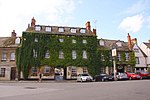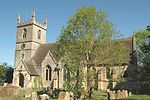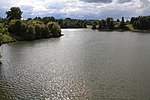The Oxfordshire Museum

The Oxfordshire Museum (also known as Oxfordshire County Museum) is in Woodstock, Oxfordshire, England, located in Fletcher's House, Park Street, opposite the Bear Hotel. It is a regional museum covering the county of Oxfordshire. The museum is located on the edge of the Cotswolds.The museum features collections of local history, art, archaeology, the landscape and wildlife relating to the county of Oxfordshire, and to the town of Woodstock in particular. The museum is run by Oxfordshire County Council and is located in a large historic house, Fletcher's House, in the centre of Woodstock. The museum has 11 galleries. There is also a coffee shop and a large garden behind the museum, which includes a Dinosaur Garden, displaying megalosaur footprints found in a limestone quarry near Ardley .Admission is free. In 2014, the Soldiers of Oxfordshire Museum (SOFO) was opened in the grounds of the museum. In 2021, SOFO launched a crowdfunding campaign for seven weeks to build a life-size WW2 Anderson Shelter.
Excerpt from the Wikipedia article The Oxfordshire Museum (License: CC BY-SA 3.0, Authors, Images).The Oxfordshire Museum
Harrison's Lane, West Oxfordshire
Geographical coordinates (GPS) Address Nearby Places Show on map
Geographical coordinates (GPS)
| Latitude | Longitude |
|---|---|
| N 51.8483 ° | E -1.3572 ° |
Address
Harrison's Lane
Harrison's Lane
OX20 1SS West Oxfordshire
England, United Kingdom
Open on Google Maps










